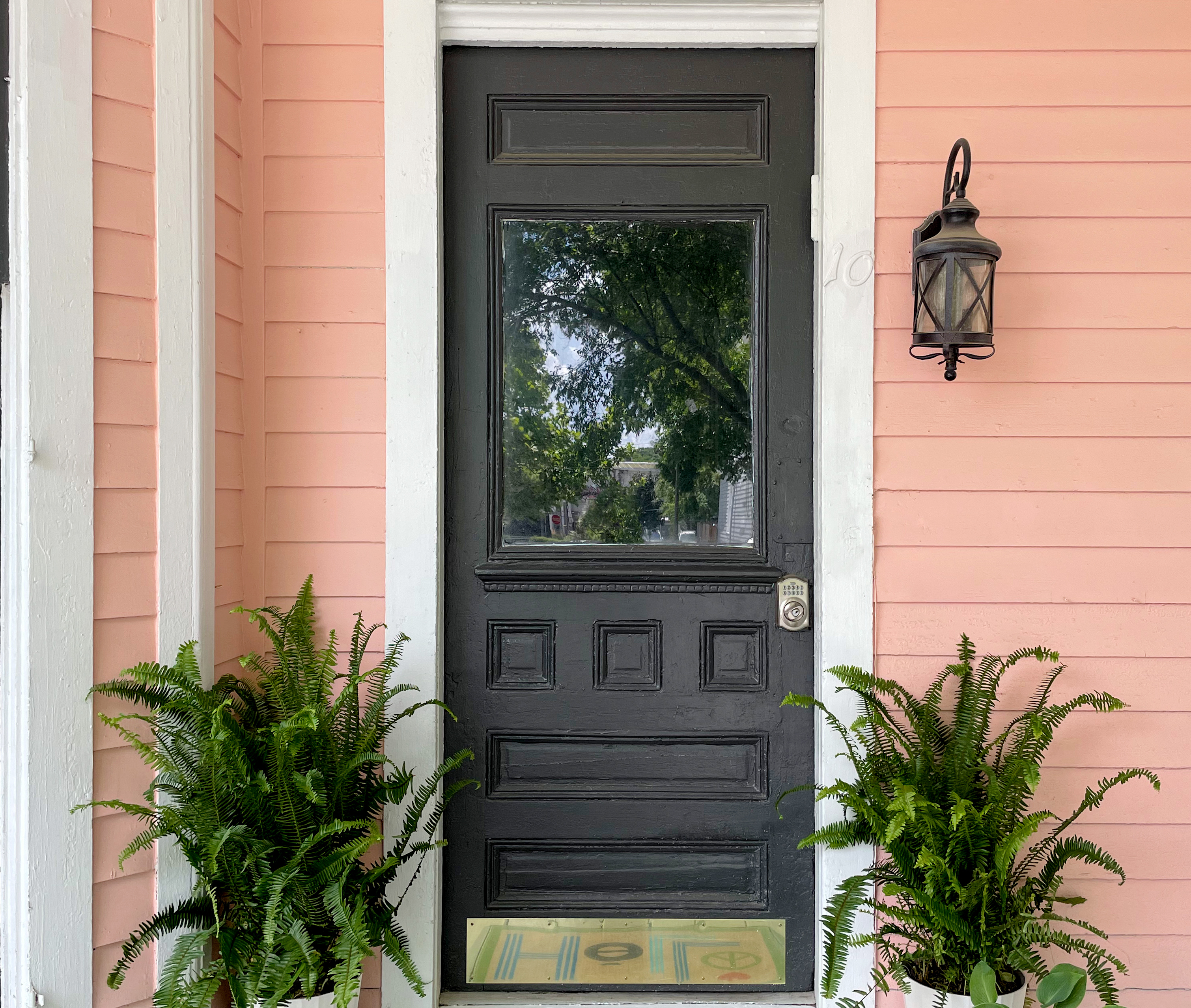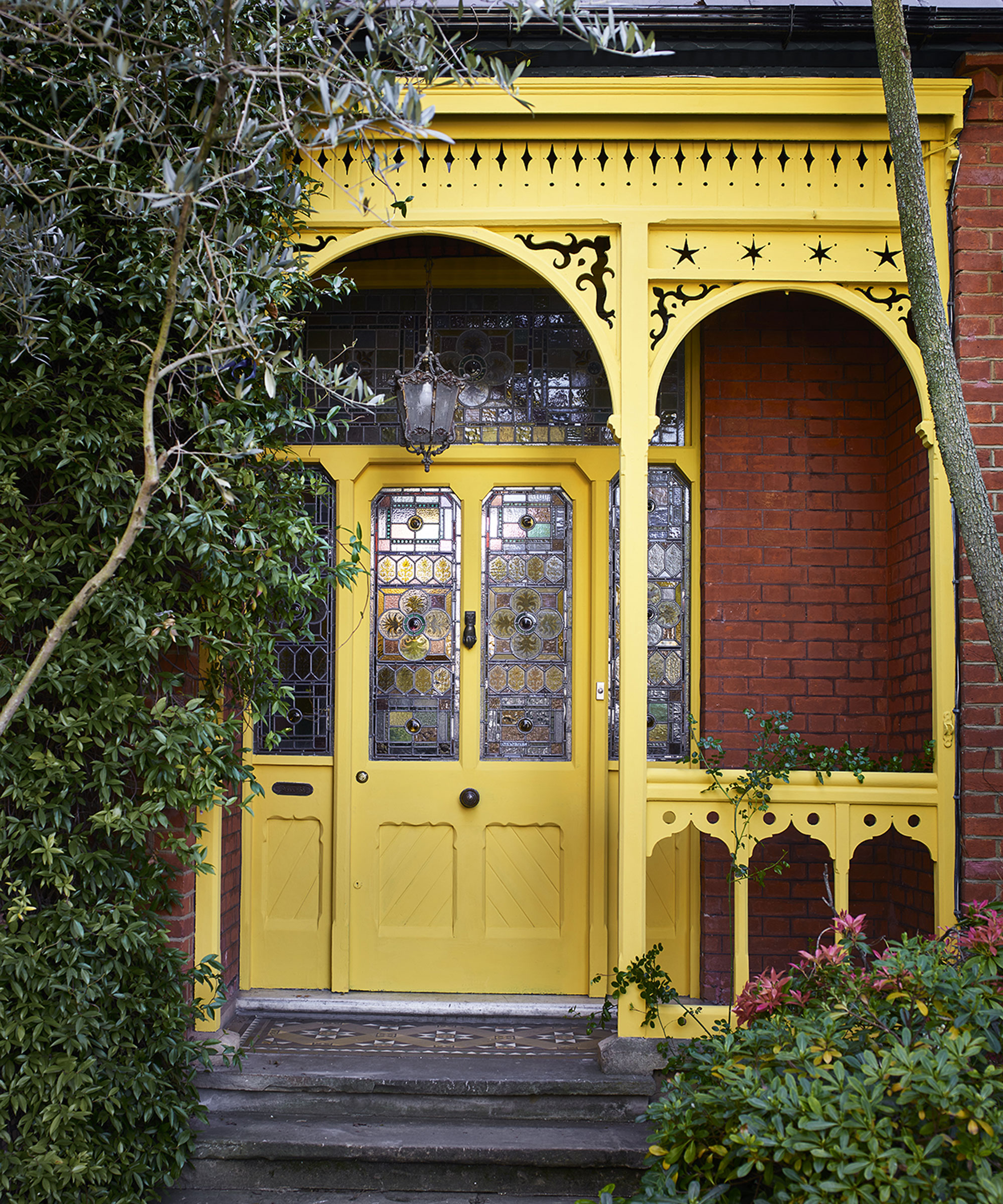Is it an okay temperature to paint outside? Why it might be too cold to decorate your home's exterior right now
Don't fall victim to the perils of painting when it's too hot or cold outdoors. We explain how to avoid them


If you want a beautiful paint finish on the exterior of your house, you'll need to know the right temperature to paint outside. Although we might complain that it's too hot or cold to do any outdoor DIY jobs in the middle of summer or winter, in the case of painting, there's actually some truth to our words. But what is the ideal temperature when it comes to taking your paintbrush outdoors?
As is also the case with our indoor paint ideas, the temperature can cause a whole host of issues to your paintwork, from a bubbly and uneven finish to visible cracks. This is because paint is unable to bind properly if it's exposed to extreme conditions while drying. Since the curb appeal of our homes holds a great deal of value, painting in these extremes isn't worth the risk. You need to find the comfortable goldilocks stage.
Instead of running the risk of decorating when in the wrong conditions, we've asked some professional painters and decorators for their advice on when you should avoid painting outdoors. If you're looking to touch up your home's exterior in time for Christmas, read below to find out when - and if - you should be doing it.

Lilith is an expert at following news and trends across the world of interior design. She's committed to helping readers make the best choices in their homes through sharing practical tips and guides for all their DIY needs. For this piece she asked painting and decorating experts for their advice on the ideal temperature for painting outside.
What is the ideal temperature for painting outside?
As Goldilocks taught us, there's usually a middle ground where things are just right. The same goes for painting. According to the experts, there's a window in which your outdoor painting should be carried out.
'An ideal temperature to paint exteriors is between 55 and 80 degrees Fahrenheit,' says Anthony Kulikowski, painting expert and owner of Five Star Painting, a Neighborly company. 'These temperatures are ideal because they allow for proper drying while not risking going too cold or too hot.'
Of course, if it's 54°F or 81°F outside, these temperatures don't carry too much risk, but as a general guideline you should try to stay in between if you want the best result.
Other factors will inevitably also play a role. Wet, windy or humid conditions are best avoided, and the paint finish you're using can also make a difference. 'For latex paint, an ideal temperature for painting outside is between 50-70°F. For oil-based paint, it's more like 45-90°F,' explains Chris Gardner of PaintRite Pros. 'Those temperatures allow your paint to bind properly.'
This is because oil-based paints are slow-drying, so don't run as much risk of drying too quickly. With latex paints - usually the best for exterior paint - high temperatures can cause it to dry too fast which can result in peeling.

What are the risks of painting when it's too cold outside?
When it's too chilly to venture out without a coat, it's probably too cold to be painting outside. But what are the risks if you do decide to do so?
Temperatures affect how long paint takes to dry and generally speaking, in lower temperatures, it will take longer. This means that your paint won’t cure properly, which can lead to bubbles on your walls. 'In these conditions, moisture gets into the paint and reduces the life expectancy of it as it is more likely to crack,' says paint and design professional, Tila Lee. There's also the fact that your surface will stay wet for longer, attracting dirt and debris caught in the wind to stick to your paint so your finish won't look as clean.
'A general rule of thumb at Five Star Painting is anything under 40 degrees overnight is too cold to paint,' says Anthony. 'The danger of painting below these temperatures is the paint not bonding properly, especially if the temperature drops below freezing, which could result in early paint failure. There is also a risk that the paint will become more viscous when it is colder resulting in application difficulties and possibly an uneven coverage.'
What are the dangers of painting when it's too hot?
On the flip side to the cold, paint can dry too fast when it's hot outside. This can cause bumps and blisters to form making the exterior of your home unsightly.
'There are several things that can go wrong when applying paint in extreme temperatures,' says Anthony. 'Painting a surface in direct sunlight may cause the paint to dry too fast which could mean the paint doesn't bind completely.'
'Another problem it can cause is uneven look in sheen or texture,' he adds. 'We've seen paint dry as soon as it hits the wall which does not allow the painter to maintain a wet edge, which results in an uneven sheen and surface.'
According to Tila, hotter temperatures can actually cause more issues than the cold, but the main issue is peeling from too much direct sunlight. 'Essentially this causes a “gel” type layer under what appears to be a dry and hard surface,' she explains. Since the cost of painting the exterior of a house doesn't come cheap, we'd encourage you to avoid painting in the heat of summer!
When is the best time of day to paint outside?
Regardless of the climate in your area, the temperature doesn't stay the same throughout the day. We all know that midday is the hottest part of the day, but limited daylight hours can make it difficult to avoid painting during this time. So when should you be painting?
Chris recommends starting on the side of your house that's in the shade. 'Start early in the morning on the side of the house opposite of the sun because that doesn't allow the sun to immediately beat down on your wet paint,' he says. This will also allow the rest of the day for the paint to dry properly.
'Most places in the Midwest are okay to paint all day, but some places in the south or in the desert you may want to avoid the midday sun,' Anthony notes. 'Just remember to try to avoid painting in direct sunlight, make sure the temperatures aren't too high or low, and make sure a freeze isn't forecast for at least a week after you've finished painting.' Whether you're painting a front door or the external walls of your home, follow these steps and you'll have a house exterior that passersby will envy!
Be The First To Know
The Livingetc newsletters are your inside source for what’s shaping interiors now - and what’s next. Discover trend forecasts, smart style ideas, and curated shopping inspiration that brings design to life. Subscribe today and stay ahead of the curve.

Lilith Hudson is a freelance writer and regular contributor to Livingetc. She holds an MA in Magazine Journalism from City, University of London, and has written for various titles including Homes & Gardens, House Beautiful, Advnture, the Saturday Times Magazine, Evening Standard, DJ Mag, Metro, and The Simple Things Magazine.
Prior to going freelance, Lilith was the News and Trends Editor at Livingetc. It was a role that helped her develop a keen eye for spotting all the latest micro-trends, interior hacks, and viral decor must-haves you need in your home. With a constant ear to the ground on the design scene, she's ahead of the curve when it comes to the latest color that's sweeping interiors or the hot new style to decorate our homes.
-
 Turns Out the Coolest New Café is Actually In Your Kitchen — Here's How to Steal the Style of TikTok's Latest Trend
Turns Out the Coolest New Café is Actually In Your Kitchen — Here's How to Steal the Style of TikTok's Latest TrendGoodbye, over-priced lattes. Hello, home-brewed coffee with friends. TikTok's 'Home Cafe' trend brings stylish cafe culture into the comfort of your own home
By Devin Toolen Published
-
 5 Bathroom Layouts That Look Dated in 2025 — Plus the Alternatives Designers Use Instead for a More Contemporary Space
5 Bathroom Layouts That Look Dated in 2025 — Plus the Alternatives Designers Use Instead for a More Contemporary SpaceFor a bathroom that feels in line with the times, avoid these layouts and be more intentional with the placement and positioning of your features and fixtures
By Lilith Hudson Published